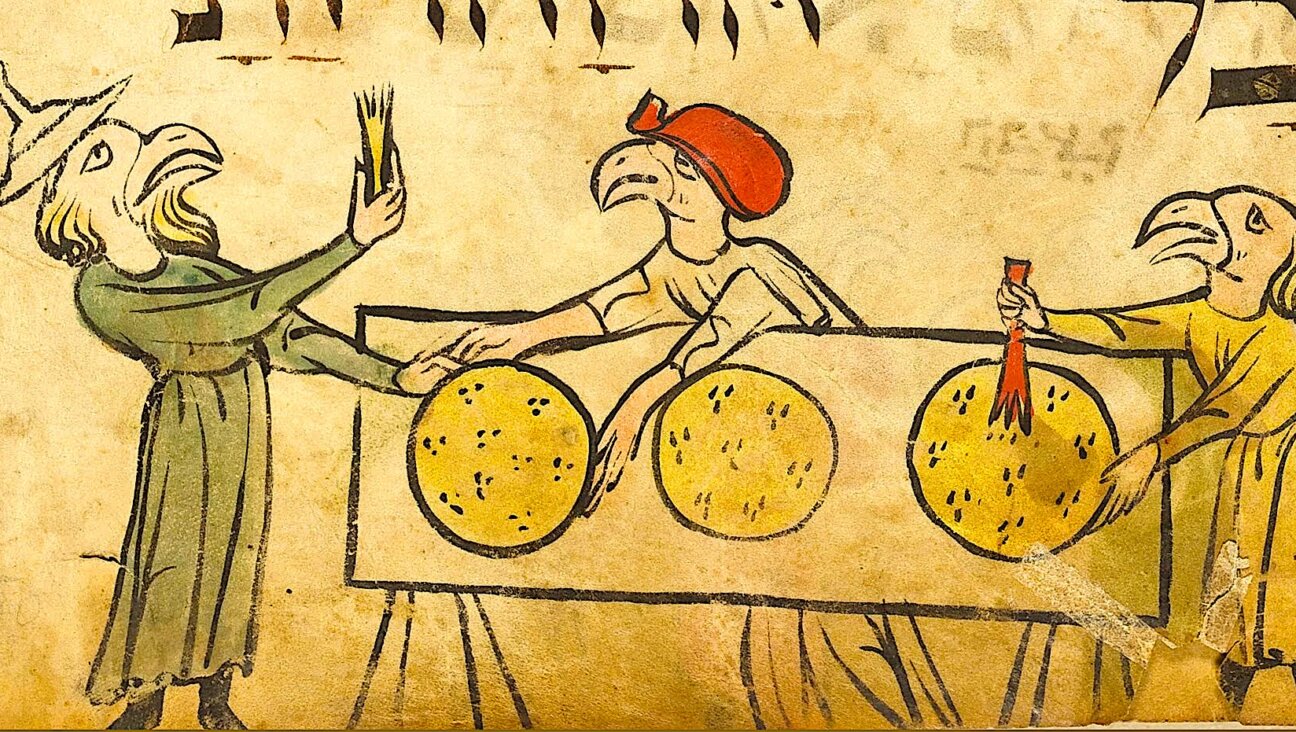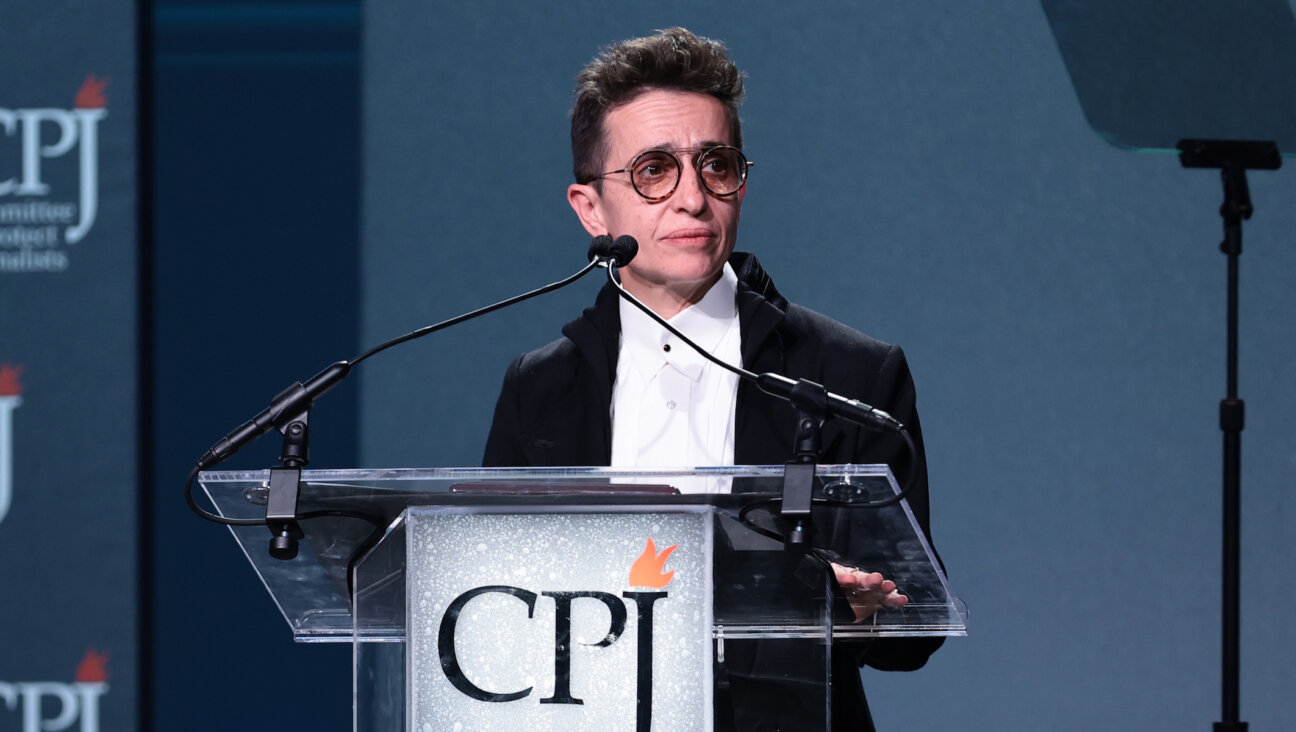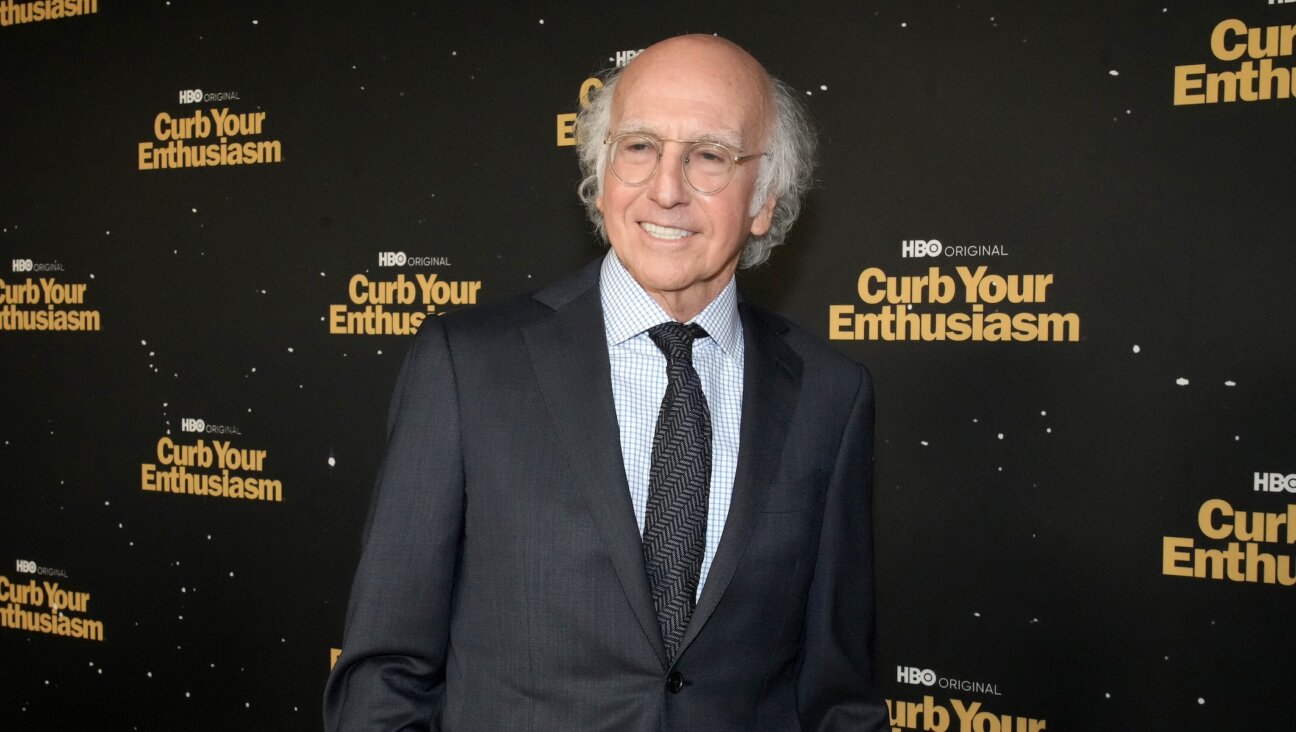Genetic Diseases? Yes. But Must We Call Them ‘Jewish’?
The extraordinary science of genetics, which is in the process of describing the very nature of our natures, is still in its infancy. The claims made for genetics, a science as narcissistic as any infant, generally outstrip the science’s ability to define or treat genetic illnesses. Yet there is an undeniable power in the notion that some people carry within them the seeds of their own and their children’s illnesses. But there is also a risk: In a world of interrelated databanks and insurance that can be canceled at a moment’s notice, would anyone want to be labeled as “at risk”? Is there any benefit to being a member of a collective that is seen as suffering from its very own genetic diseases?
When it comes to Jews, even the best of the recent work on genetic inheritance is tainted with the idea that Jews constitute a “race” and not a peoplehood. The curse of racial theory and its culmination in the Shoah should make us ever vigilant about the misappropriation of scientific claims as applied to “the Jews,” even when it is sweetened with praise. In a much-discussed study published last year, three University of Utah anthropologists suggested that Jewish “superior” intelligence was the result of the selective “inbreeding” of Jews. The study proceeded to link the “genetics of intelligence” with the prevalence of “Jewish genetic diseases.” The authors wrote: “Perhaps most of the characteristic Ashkenazi genetic diseases fall into this category. Selection has imposed a heavy human cost: not crippling at the population level, cheaper than the malaria-defence mutations like sickle cell and G6PD deficiency, but tragic nonetheless.” Jews may be smart, but the cost is that they are an “ill people.” Of course, being an “ill people” was also a charge made by 19th-century antisemitic science.
Are the Jews an “ill people”? Well, there is a history to this. In the United States, the National Foundation for Jewish Genetic Diseases has identified nine genetic diseases as “being the most common among Jews of Eastern European or Ashkenazi descent.” The diseases include Tay-Sachs; Bloom’s syndrome, in which about 10% of those affected also have diabetes; Canavan disease, a progressive neurological disorder; dystonia, which affects movement control; Fanconi anemia, which often leads to leukemia; familial dysautonomia, a disease of the nervous system; Gaucher disease, a metabolic disorder; Niemann-Pick disease, a neurodegenerative disorder, and the most recently discovered “Jewish” genetic disease, mucolipidosis, a neurological disorder. Labeling these diseases “Jewish,” especially in the public press, has created the impression that mainly “Jews” (defined variously as an ethnic, religious or biological group) carry and manifest them. The reality, however, belies this claim. A collective can’t carry a disease; only individuals can.
Medical genetics today offers little but the identification of potential risk for such individuals. As Keith Wailoo and Stephen Pemberton show in their new book, “The Troubled Dream of Genetic Medicine: Ethnicity and Innovation in Tay-Sachs, Cystic Fibrosis, and Sickle Cell Disease” (Johns Hopkins), the pitfalls associated with genetic testing (fear, absence of choice) may often outweigh the advantages. The boundaries surrounding these diseases are seen to be absolute, even though there are, for example, regular reports of cases of Tay-Sachs beyond the “Jewish” community, as the disease is also present in non-Jewish communities in Louisiana and Quebec.
Yet there are diseases that do seem to be limited to Eastern European Jews. The case of familial dysautonomia can be taken as almost paradigmatic. The Web site of the Familial Dysautonomia Hope Foundation has made the link explicit: “Our logo shows a small case ‘fd’ to reflect the medical expression of the autosomal recessive nature of FD genetics. The letters are in an upswept Star of David to symbolize our optimism for the future; the Star of David in recognition of the predominantly Jewish inheritance of this disorder (our ‘founder,’ who had the first mutation several hundred years ago, undoubtedly lived in a Polish shtetl).” Dysautonomia thus becomes a “Jewish” disease, and all its sufferers become part of an extended family, an imagined community linked by their common ancestor, who happened to be a Jew. But why a Jew? Because in Central Europe and in Russia, Jews rarely, if ever, felt themselves to be Polish or Russian. Had they, would we speak of familial dysautonomia as a “Polish genetic disease”? Probably not. We would speak of it as being limited to the offspring of a specific individual and as a mutation that appeared first in a specific location.
One mother of a child with familial dysautonomia wrote to me that she saw a particularly “Jewish” difficulty in constructing such an extended, public family: “My armchair theory is that Jewish families have some difficulty accepting children who do not have a bright future (as opposed to, in general, Catholic families). In the Hasidic community, kids with FD are often ‘hidden’ (according to the main doctor who treats the disorder).” This strikes me as a problem intimated in the Utah study. What do you do with genetic diseases that create Jews who are other than “smart”?
A historical model for the dangers of speaking about “Jewish diseases” can be found in the story of diabetes. For hundreds of years it was understood as being transmitted within specific groups (in the scientific language of the 19th century, “races”) such as blacks and Jews. Diabetes is a good case study for such questions because it is a disease that has two forms, one of which is clearly transmitted genetically; the other may be present as a genetic predisposition — with a strong environmental factor. In the 19th century, when this distinction was not understood, labeling blacks or Jews as diabetic races was a means of labeling these groups as inferior. Even Jewish scientists at the turn of the century accepted the racial stigmatization of diabetes. Rather than being seen as a disease of individuals, diabetes was the fault of “the Jews.” Diabetes as the “Jewish disease” became a curse on all Jews, and part of the anxiety about being Jewish or having Jewish ancestry. These things have a way of shifting; today, the general consensus is that diabetes is not a particularly Jewish illness.
“Race” has reappeared today in categories such as “Jewish genetics diseases,” as if the pseudoanthropological definitions of race of the 19th and 20th centuries are identical with the idea of genetic cohorts in contemporary science. While any individual Jew may show the impact of any number of genetically transmitted diseases, “Jewish” or not, binding this evident fact to a homogenous biological definition of a Jew leads to misrepresentations and potentially bad medicine. The desire to draw clear lines between different populations is perhaps intrinsic to human nature. The need to define and control is built into all social groups as central to their self-definition. But, in the long run, it is probably better if Jews are spared the label of being an “ill people,” and for all individuals, Jewish or not, to undergo genetic testing to at least identify those potential illnesses that they or their children may have, independent of their self-definition as “Jews.”
Sander Gilman, the author of more than 70 books, is a distinguished professor of the liberal arts and sciences at Emory University.
The Forward is free to read, but it isn’t free to produce

I hope you appreciated this article. Before you go, I’d like to ask you to please support the Forward.
At a time when other newsrooms are closing or cutting back, the Forward has removed its paywall and invested additional resources to report on the ground from Israel and around the U.S. on the impact of the war, rising antisemitism and polarized discourse.
Readers like you make it all possible. We’ve started our Passover Fundraising Drive, and we need 1,800 readers like you to step up to support the Forward by April 21. Members of the Forward board are even matching the first 1,000 gifts, up to $70,000.
This is a great time to support independent Jewish journalism, because every dollar goes twice as far.
— Rachel Fishman Feddersen, Publisher and CEO
2X match on all Passover gifts!
Most Popular
- 1

News A Jewish Republican and Muslim Democrat are suddenly in a tight race for a special seat in Congress
- 2

Film & TV What Gal Gadot has said about the Israeli-Palestinian conflict
- 3

Fast Forward The NCAA men’s Final Four has 3 Jewish coaches
- 4

Fast Forward Cory Booker proclaims, ‘Hineni’ — I am here — 19 hours into anti-Trump Senate speech
In Case You Missed It
-

News Who would protect New York Jews better? Cuomo and Lander trade attacks on the campaign trail
-

News Rabbis revolt over LGBTQ+ club, exposing fight over queer acceptance at Yeshiva University
-

Opinion In Qatargate fiasco, Netanyahu’s ‘witch hunt’ narrative takes cues from Trump
-

Yiddish די הגדה ווי אַ לעבעדיקער דענקמאָל פֿון אַשכּנזישער פּאָעזיעThe Haggadah as a living monument to Ashkenazi poetry
אַמאָל זענען די פּייטנים, מיסטישע דיכטער־וויזיאָנערן, געווען אויבן־אָן בײַ די פֿראַנצויזישע און דײַטשישע ייִדן.
-
Shop the Forward Store
100% of profits support our journalism
Republish This Story
Please read before republishing
We’re happy to make this story available to republish for free, unless it originated with JTA, Haaretz or another publication (as indicated on the article) and as long as you follow our guidelines.
You must comply with the following:
- Credit the Forward
- Retain our pixel
- Preserve our canonical link in Google search
- Add a noindex tag in Google search
See our full guidelines for more information, and this guide for detail about canonical URLs.
To republish, copy the HTML by clicking on the yellow button to the right; it includes our tracking pixel, all paragraph styles and hyperlinks, the author byline and credit to the Forward. It does not include images; to avoid copyright violations, you must add them manually, following our guidelines. Please email us at [email protected], subject line “republish,” with any questions or to let us know what stories you’re picking up.















